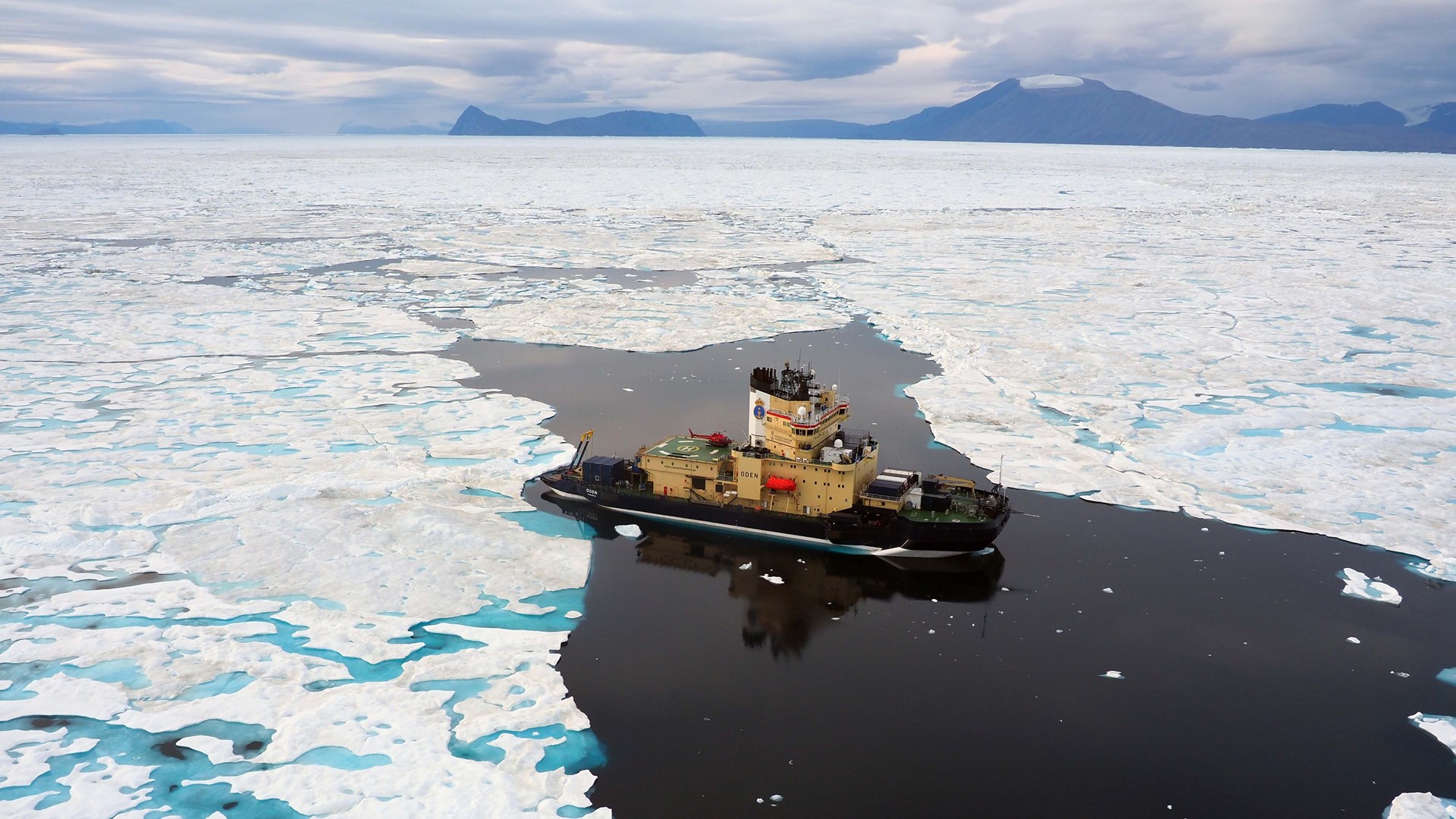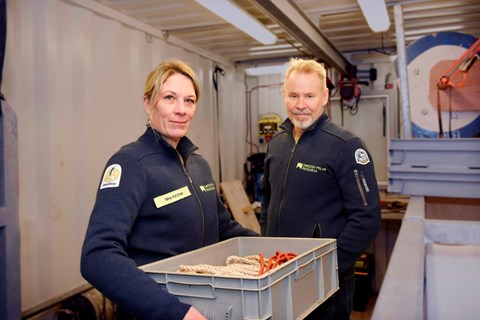Expedition to the Victoria Fjord to increase knowledge of Greenland's melting glaciers
 The icebreaker Oden outside Sherard Osborn Fjord during the Ryder 2019 expedition. Photo: Martin Jakobsson
The icebreaker Oden outside Sherard Osborn Fjord during the Ryder 2019 expedition. Photo: Martin Jakobsson
On August 5, the Arctic expedition North of Greenland 2024 starts with 40 researchers on board. The icebreaker Oden will then go from Thule to Victoria Fjord in northern Greenland to acquire more knowledge about the future of the northern Greenland ice sheet and how it can affect the global sea level.
Martin Jakobsson, professor of marine geology and geophysics at Stockholm University, and Nina Kirchner, professor of glaciology at Stockholm University, lead the research on board.
– This summer's expedition is based on the previous expeditions Petermann 2015 and Ryder 2019, where we now aim to reach the Victoria Fjord, which lies north of the Sherard Osborn Fjord, where the Ryder Glacier flows out. In Victoria Fjord, there is C.H. The Ostenfeld glacier, which lost its entire floating ice tongue after 2002; Martin Jakobsson explains and explains why these places are of interest:
– We thereby cover the three large glaciers, Petermann, Ryder and Ostenfeld, which all behaved differently despite experiencing broadly the same climate. It is important to understand what it depends on to be able to say something about the future of the northern Greenland ice sheet and its contribution to the rise of the global sea level in the future.

Data on the marine cryosphere
In addition to obtaining data from what the marine cryosphere looks like right now in northern Greenland, the researchers use sediment cores to learn what it looked like historically. This allows us to understand how the climate may develop in the future and how much the sea level may rise in a warmer climate.
– We work a lot with numerical models to see how the cryosphere will develop. Still, even the best models get even better when they receive input in the form of data from both the current situation and history. Therefore, we measure key parameters such as sea temperature, map how the bottoms of the fjords look physically, and take sediment cores that form an archive of the history of the cryosphere and how it has developed over time. Having reliable numerical models is crucial to being able to make good forecasts regarding future ice melting and subsequent sea level rises, says Nina Kirchner.
Having reliable numerical models is crucial to being able to make good forecasts regarding future ice melting and subsequent sea level rises
– Nina Kirchner, Stockholm University
Challenging ice conditions
The mobilization of Oden in Helsingborg's harbor has recently been completed, and a lot of equipment has been loaded when Oden is being prepared for the expedition. Stockholm University accounts for the majority of the 40 researchers participating in North of Greenland, and ten universities from six countries are represented.
– We have sent down three 20-foot containers filled with research equipment from Stockholm University, which are now in place at Oden. Now, we follow the ice situation and wait for departure, says Nina Kirchner.
The ice condition can become a challenge when Oden has to get to the difficult-to-access Victoria Fjord, a place that has yet to be visited.
We have Plan A, but also B, C, and D. If Plan A is not feasible due to the ice conditions, we take altitude for the most difficult imaginable ice conditions. I look more analytically at our plans and try to keep expectations down; otherwise, you only risk being disappointed, says Martin Jakobsson.
Planning science and logistics
As previously mentioned, Martin Jakobsson and Nina Kirchner have overall scientific responsibility for the expedition and coordinate the ten research projects to be carried out. The role of the Co-Chief Scientist also includes more aspects.
– It is a lot about achieving good collaborations. We have been involved from the beginning and led the development of the theme for the expedition, GEOEO - North Greenland Earth-Ocean-Ecosystem Observatory. Being Co-Chief also means coordinating the logistics with the Swedish Polar Research Secretariat before and during the expedition. The scientific and the logistical planning are connected. As Co-Chiefs, we are also in contact with other partners, in this case with the Co-Chiefs for the GoNorth expedition with the Norwegian RV Crown Prince Haakon and with the Canadian icebreaker CCGS Amundsen, which is carrying out its annual Arctic expedition.

